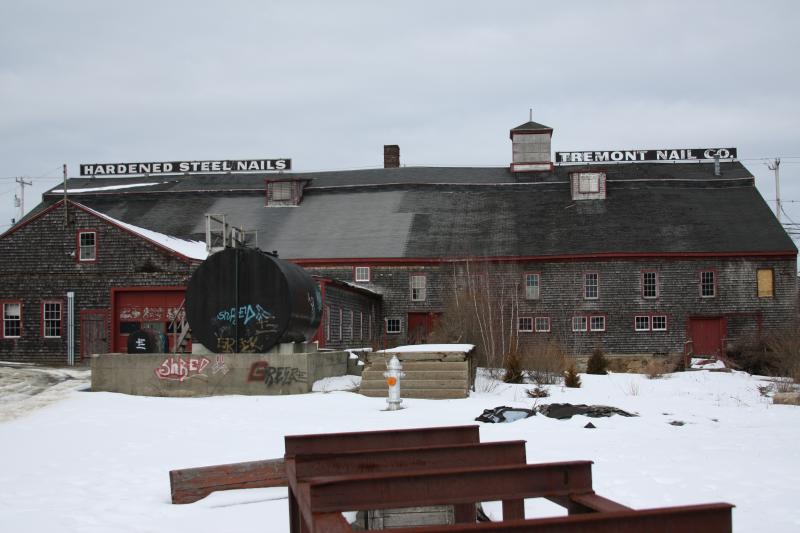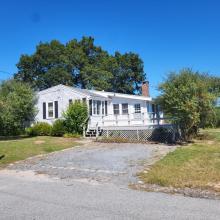WITH INTERACTIVE MAP: Professor's project aims to document, find profitable use for Tremont Nail Factory
In recent years, everything from a restaurant to an affordable housing complex has been proposed for the Tremont Nail complex on Elm Street.
Purchased by the town in 2004 with Community Preservation Act funds, the 7.2-acre property features eight buildings, most of which are in need of intense repair.
But one Wareham resident is determined to inventory what’s in the buildings, and hopes to figure out a way to make the site profitable for the town.
The site’s historical significance makes it well worth the effort of preserving it, says Johanna Rowley, adjunct faculty at Boston Architectural College, and owner of Rowley Design Studios in Wareham.
Rowley was inspired to undertake the Tremont project by both her deep roots in Wareham, and an unusual turn of weather that left Springfield and other parts of Western Massachusetts devastated.
“It really did start with disaster recovery," said Rowley. "You want to have everything in place if a disaster strikes."
In 2011, a series of tornadoes touched down in the western part of the state, and afterwards, Rowley worked with the Federal Emergency Management Agency (FEMA) as a preservationist. She was tasked with preserving historic sites that had been decimated by the cyclones, but according to Rowley, “it was a very haphazard process.”
Rowley is hoping that if a similar fate were to befall upon the Tremont Nail Factory District, the history contained within the walls of the buildings would not be lost forever. She is also hoping to find a purpose for the property that could generate revenue for the town.
“In order to determine what potential uses there could be for the property, certain things need to be documented and studied,” said Rowley.
Boston Architectural College has provided Rowley with a grant to get the project started, and in addition to providing a service to the town, she says it will provide a valuable learning experience for her students, who will aid her in taking inventory of the site.
Rowley emphasized that while she’s excited about the historic aspect of the project, she wants to find a use for the buildings that will fit with the character of Wareham, and provide a service that the town is lacking – although what that service is isn’t yet clear.
“We’re in the gathering stage,” Rowley noted. “It’s wonderful that we’re documenting Tremont Nail, but if we don’t understand the full scope of things in town” she and her team of students could wind up presenting a use for the building that is out of touch with what local stakeholders want.
What she does know is that there are a number of stakeholders involved, including year-round residents, tourists, and business owners.
“What’s missing in town?” Rowley asked. “You really need to understand, what does the town have, and what can be improved.”
Rowley’s family has lived in Wareham for many generations. Her great-grandfather worked as a blacksmith when the ironworks industry, of which Tremont was a part, was booming.
“There used to be multiple ironworks in the area,” said Rowley. “We had five ironworks in Wareham alone. ... This is the only surviving property that’s basically intact.”
According to Rowley, the industry began to die out around here when businesses began buying cheaper steel from factories in New York and Pennsylvania.
Rowley plans to work in conjunction with the Wareham Historic Commission and the town in the study. She is also hoping to coordinate with the School Committee to involve high school students in the project as volunteers.
Rowley says the project will give students a chance to learn about a multitude of subjects, including design, history, science, and conservation.
“Community involvement will be important," Rowley added. "We’re not at that stage yet, but we agree community involvement is important."
The big question, to which there may be multiple answers, is this: Can Rowley and her team find a new use for Tremont Nail District that will be beneficial to the town?
“It’s not an easy answer to get to," Rowley noted, "not if you want a good one.”
Click here for an interactive tour of the Tremont Nail buildings!
The information in the tour is from the "Tremont Nail Factory Conditions Assessment & Feasibility Study," completed in 2009 by Menders, Torrey & Spencer, Inc.
The Community Preservation Committee and the Selectmen commissioned the study to evaluate the conditions of the site and its buildings, and to study the feasibility of the site for adaptive reuse. The report included an analysis of each building, the costs associated with stabilizing that building so it could be used in the future, and estimated the rehabilitation costs using three figures -- a low cost of $150 per square foot, medium cost of $250 per square foot, and a high cost of $300 per square foot.












